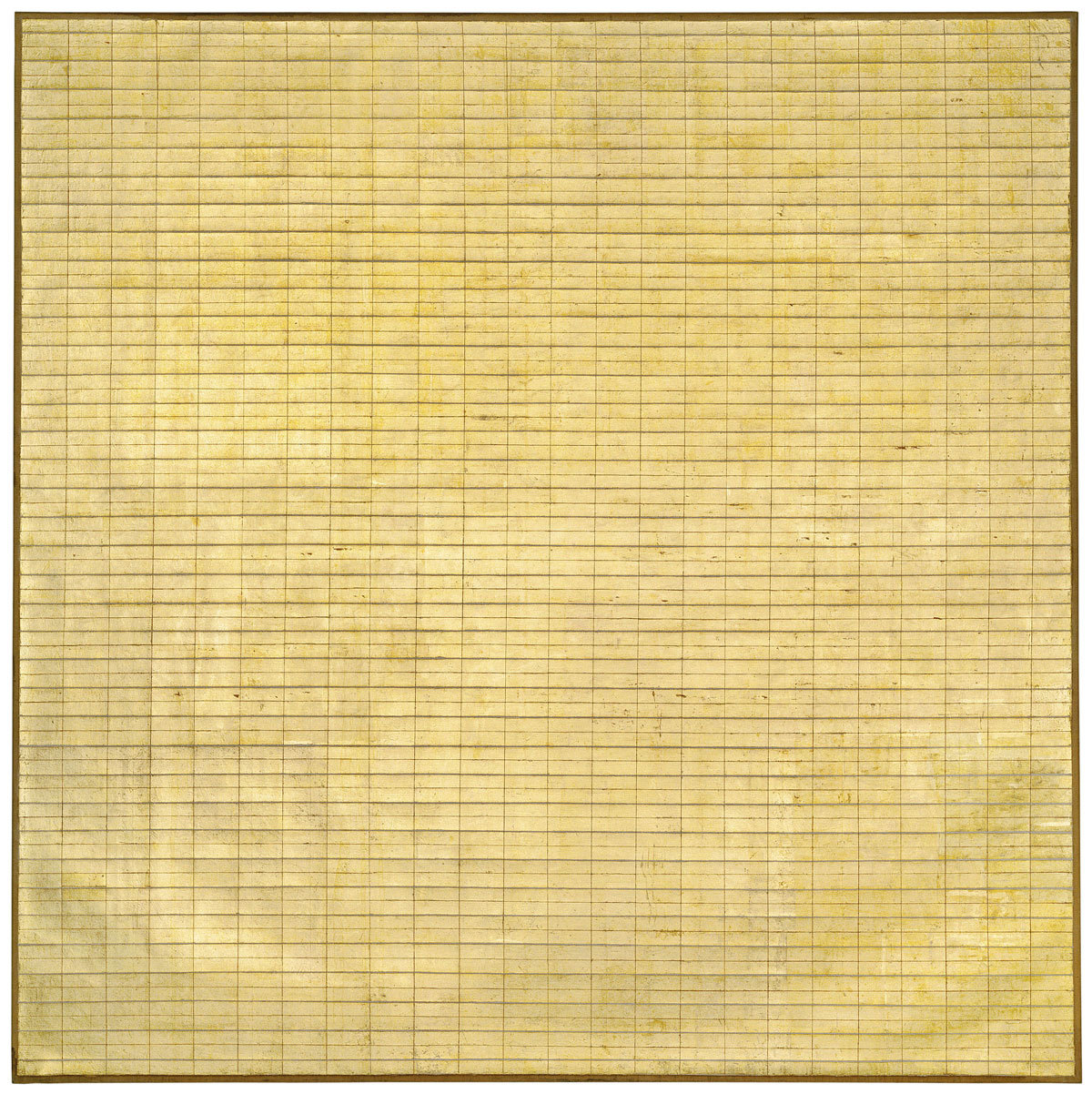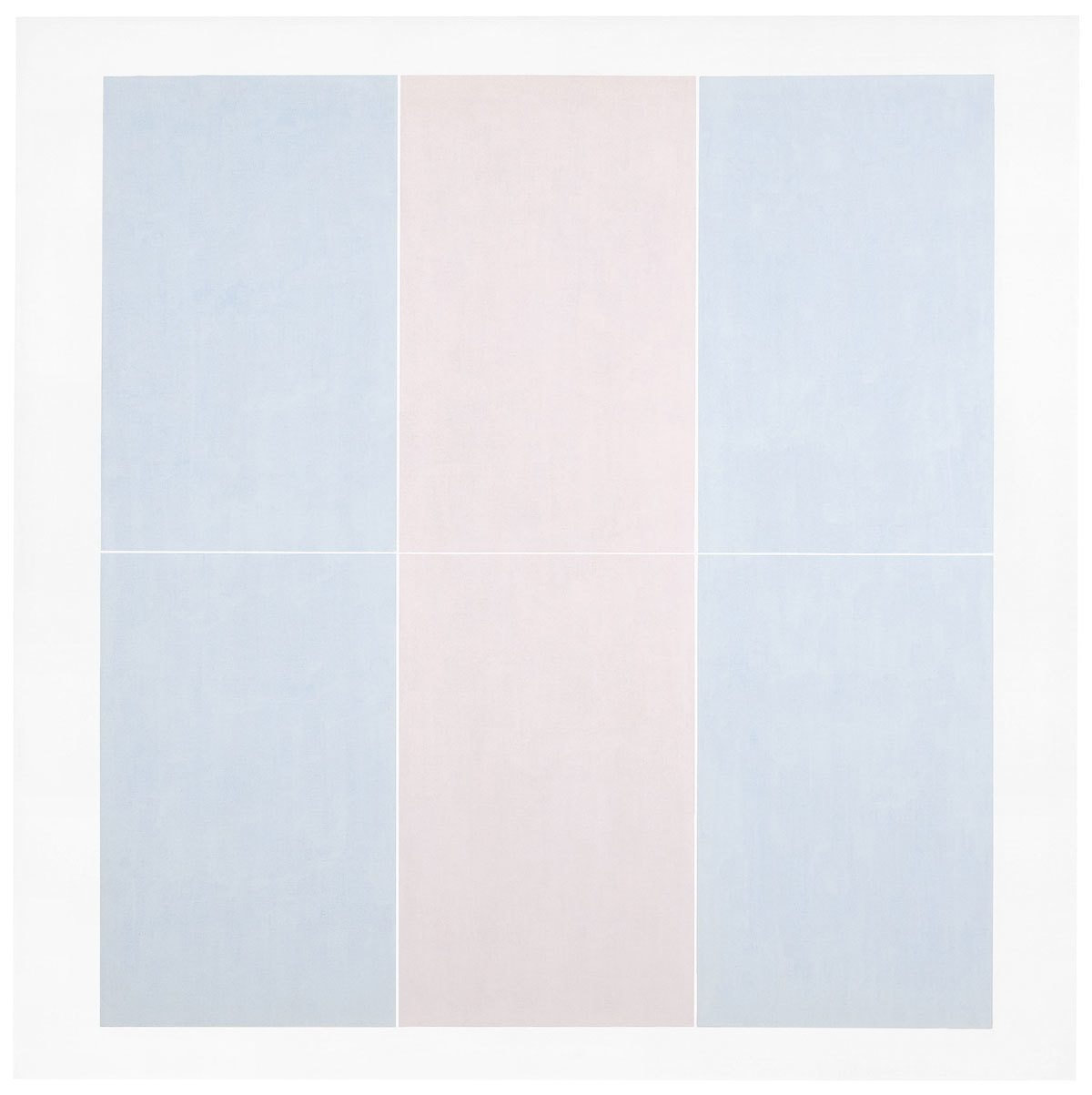Agnes Martin’s life had more drama than her restrained meditations in paint reveal. She took up painting late, enrolling in art school at 30, and the earliest works in this retrospective – the first anywhere in 20 years – follow from her 40s. She was atypical – a leading minimalist in a mainly male American Abstract art world, gay, and privately negotiating schizophrenia.
Saskatchewan-born Martin isn’t much known in the UK and her paintings are seldom seen here (she destroyed most work that fell short of her standards and few ever made it across to British collections). But in the US, her adopted home, she’s famed for her luminescent bands of pigment, modest in form and subtle in colour, on uniform canvases of 72″ x 72″.

Martin exited the 70s New York art world just as she was getting big. Friends with Warhol, but firmly outside the Factory scene, she swapped hedonism for New Mexico, where she lived out her life in an adobe villa in the desert. There her painting took an even more subdued downbeat, eventually sticking entirely to grid systems. “More and more I excluded from my painting all curved lines, until finally my compositions consisted only of vertical and horizontal lines.”
The lines suggest horizons, skies and the simplicity and nothingness of sun-bleached desert landscapes. In the 70s, she entered a phase of using just three diluted pastel colours: yellow, pink and blue. You can see them as cyclical stills, snapshots of day following night. As her friend the artist Ann Wilson observed, the colours are like, “rock at dawn, at noon and sunset”.
Martin’s painting has an intensity and gentleness that’s informed by her interest in Zen Buddhism and Eastern philosophy. The very human repetition of strokes that form the grids of her paintings evoke the practice of raking pebbles in Zen gardens. The room containing the set The Islands (1979) has a striking quiet. It’s a series of 12 bright white acrylic paintings and grey graphite pencil lines in subtle variation.

The show takes us right up to her last paintings from her 70s when she – like Kazimir Malevich before – reintroduced forms to her practice that she’d taken pains over the years to remove. Enter bold shapes in bright colours that even suggest understated scenes from nature or geometry.
Perhaps because of her interest in nature and Eastern spirituality, Martin favoured experience over interpretation, feeling over understanding and inspiration over planning. Her works ask for little introduction, inviting viewers simply to be still with them.
Credits
Text Sharon Thiruchelvam
Main image Agnes Martin, Untitled #3 1974 © 2015 Agnes Martin / Artists Rights Society (ARS), New York
